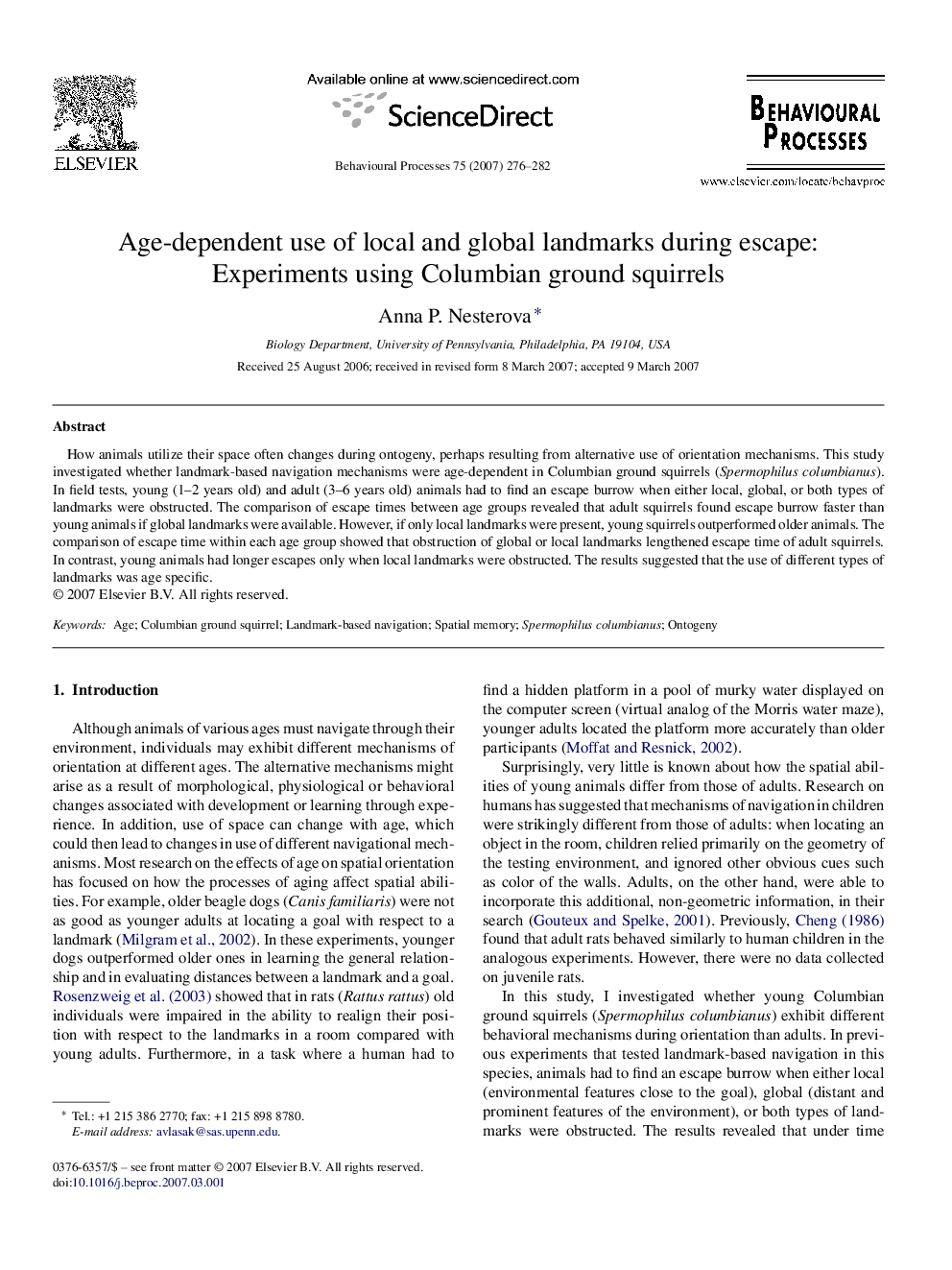| Article ID | Journal | Published Year | Pages | File Type |
|---|---|---|---|---|
| 2428053 | Behavioural Processes | 2007 | 7 Pages |
Abstract
How animals utilize their space often changes during ontogeny, perhaps resulting from alternative use of orientation mechanisms. This study investigated whether landmark-based navigation mechanisms were age-dependent in Columbian ground squirrels (Spermophilus columbianus). In field tests, young (1-2 years old) and adult (3-6 years old) animals had to find an escape burrow when either local, global, or both types of landmarks were obstructed. The comparison of escape times between age groups revealed that adult squirrels found escape burrow faster than young animals if global landmarks were available. However, if only local landmarks were present, young squirrels outperformed older animals. The comparison of escape time within each age group showed that obstruction of global or local landmarks lengthened escape time of adult squirrels. In contrast, young animals had longer escapes only when local landmarks were obstructed. The results suggested that the use of different types of landmarks was age specific.
Related Topics
Life Sciences
Agricultural and Biological Sciences
Animal Science and Zoology
Authors
Anna P. Nesterova,
